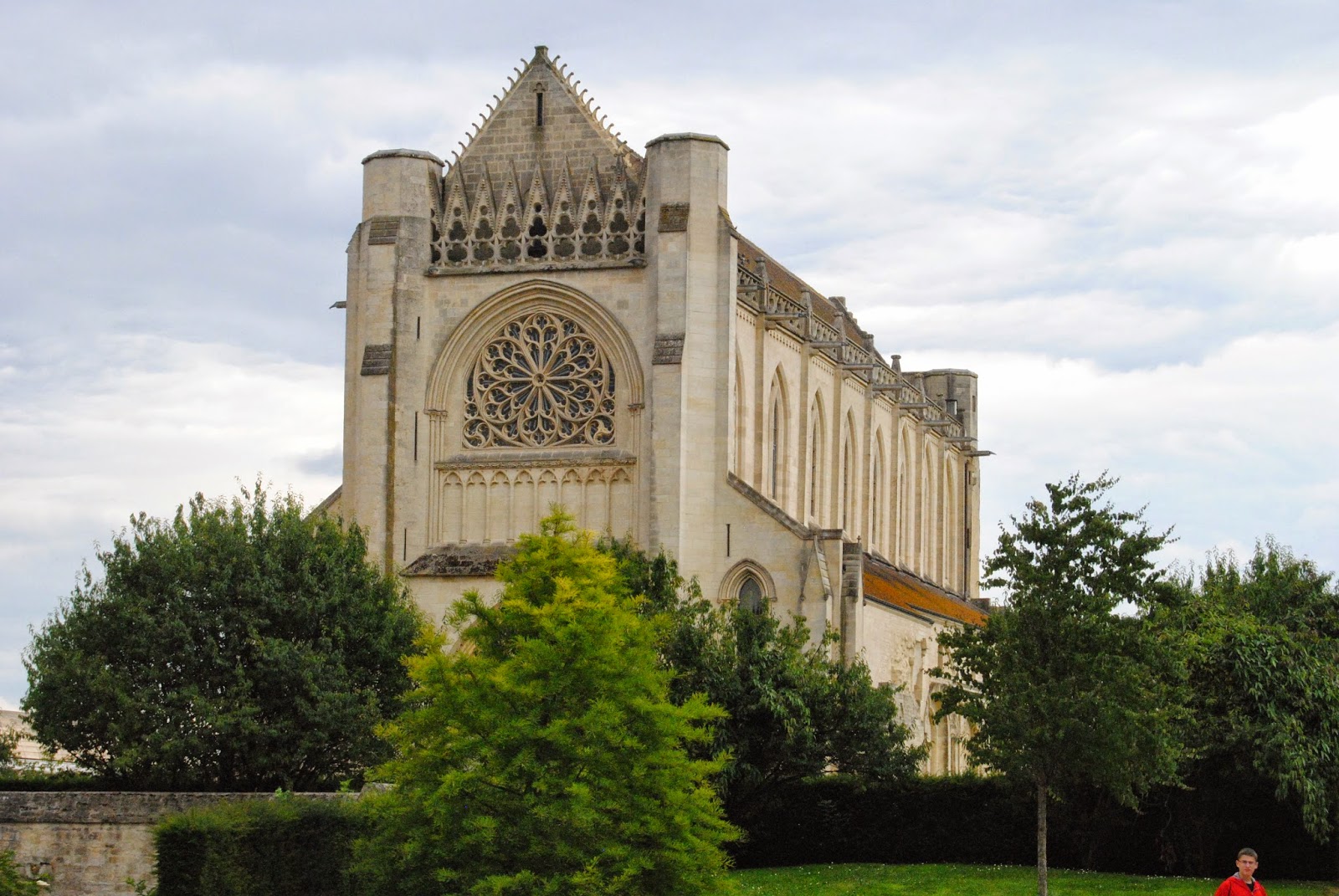 |
| Our base while we were in Normandy was the town of Bayeux, best known for the Bayeux Tapestry. |
 |
| We did go see the Tapestry, which was cool. The Tapestry is 9 panels of embroidery, 70 feet long, that tells the story of William the Conqueror's invasion of England in 1066. |
 |
| A lot of the businesses had artwork in their windows commemorating the 70th Anniversary of D-Day. The British used Bayeux as their headquarters. |
 |
| This photo was taken at 10:30 PM. |
 |
| We stopped in lunch in Arromanches, a town that was part of the British beaches. There, the British constructed mulberry harbors to unload supplies. This is the remains of one of the harbors. |
 |
| The art work was so good, I actually had to do a double-take to make sure there weren't really children painting on the wall. |
 |
| The town of St. Lo was the site of major bombing raids leading up to the invasion, so most of the town is made of modern buildings. |
 |
| These photographs show the devastation that the city endured. |
 |
| This was the cathedral prior to the war. |
 |
| I don't know how much of the interior they had to reconstruct, but it felt more like the older churches I have visited in Europe before. |
 |
| One corner of the church was a museum to the war. |
 |
| This is a monument to the victims of Nazi oppression. |
 |
| We paid respects at Madame's grave. |
 |
| The grounds of this monastery were used by the Germans as a headquarters. Today, the main church is a library. |
 |
| Within the grounds, 19 Canadian prisoners of war were tortured and executed. This is their memorial. |



















































No comments:
Post a Comment